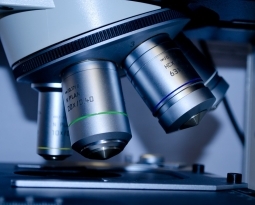Texas Patent of the Month – March 2024
Syzygy Plasmonics, Inc. was founded with a mission of decarbonizing the chemical processes that our modern lives rely on. With a commitment to preventing a gigaton of carbon emissions from entering the atmosphere by 2040, the company continuously invests in research and development avenues to bring greater efficiency and capability to chemical production and environmental mitigation processes.
The company recently secured a patent for a new type of photocatalytic reactor which uses multiple photocatalytic reactor cells. This newly patented system employs an ingenious combination of optically transparent enclosures and plasmonic photocatalysts to catalyze desired chemical reactions with the application of light.
Traditionally, industrial processes heavily rely on heterogeneous catalysts dispersed into support materials, often necessitating high temperatures and pressures for optimal catalytic activity. However, Syzygy Plasmonics’ reactor system challenges this norm by harnessing the power of light to drive catalytic reactions.
At the heart of this invention lies the reactor cell, featuring an enclosure made of optically transparent material and a plasmonic photocatalyst supported within. These reactor cells are housed within a larger structure, with each cell equipped with inputs for reactants and outputs for reformates. The magic begins when light is applied to the system, activating the plasmonic photocatalysts within each cell to transform reactants into reformates efficiently and sustainably.
What sets Syzygy Plasmonics’ reactor system apart is its versatility and effectiveness. Whether it’s chemical production or environmental remediation, this system offers a cost-effective and environmentally friendly solution. Moreover, its design allows for scalability, making it suitable for various industrial applications.
The system’s reliance on light sources opens up possibilities for solar-powered catalysis, aligning with the growing demand for renewable energy solutions. By integrating solar concentrators, the system can maximize the utilization of sunlight, further enhancing its efficiency and reducing its environmental footprint.
Are you developing new technology for an existing application? Did you know your development work could be eligible for the R&D Tax Credit and you can receive up to 14% back on your expenses? Even if your development isn’t successful your work may still qualify for R&D credits (i.e. you don’t need to have a patent to qualify). To find out more, please contact a Swanson Reed R&D Specialist today or check out our free online eligibility test.
Who We Are:
Swanson Reed is one of the U.S.’ largest Specialist R&D tax advisory firms. We manage all facets of the R&D tax credit program, from claim preparation and audit compliance to claim disputes.
Swanson Reed regularly hosts free webinars and provides free IRS CE and CPE credits for CPAs. For more information please visit us at www.swansonreed.com/webinars or contact your usual Swanson Reed representative.

















